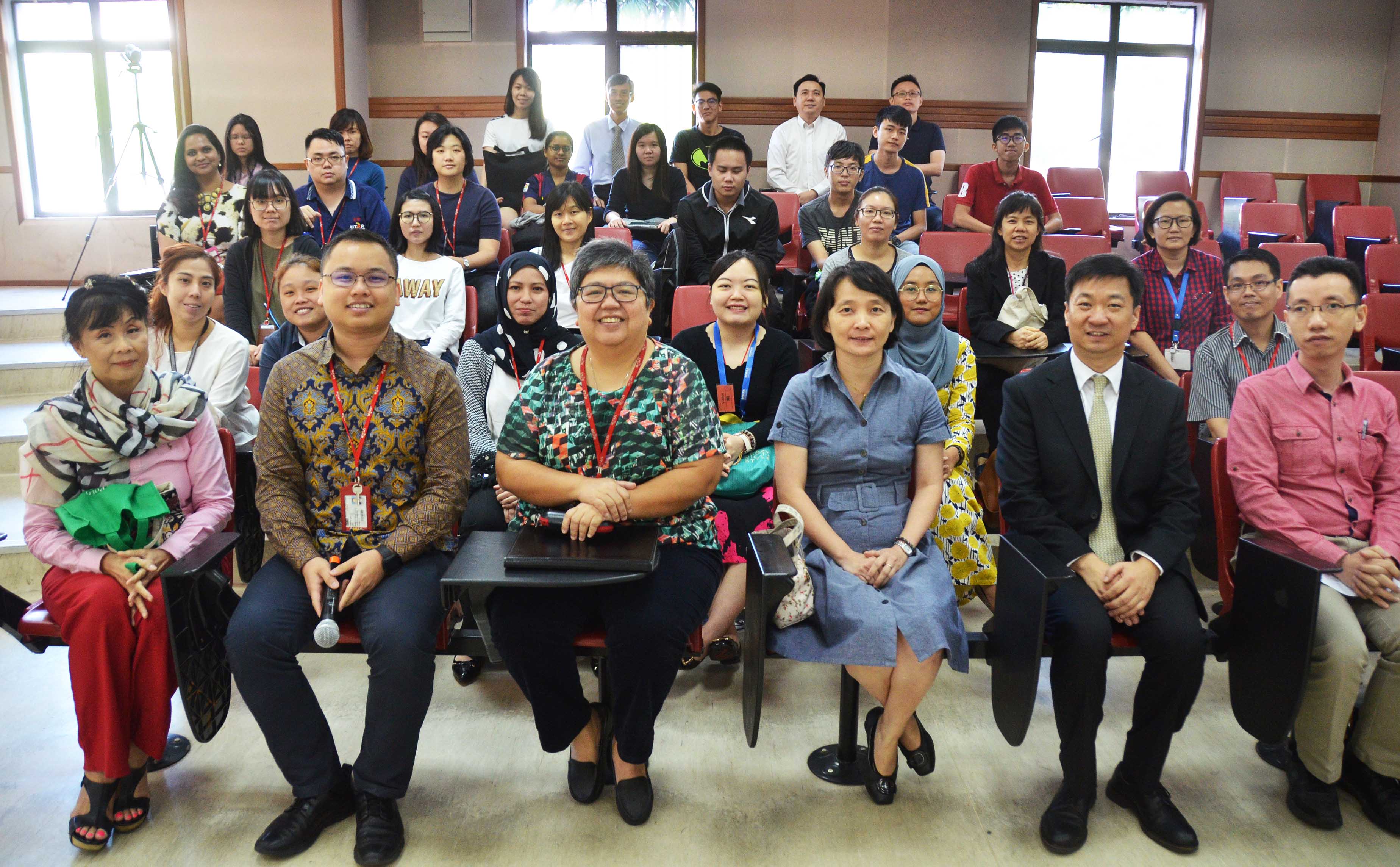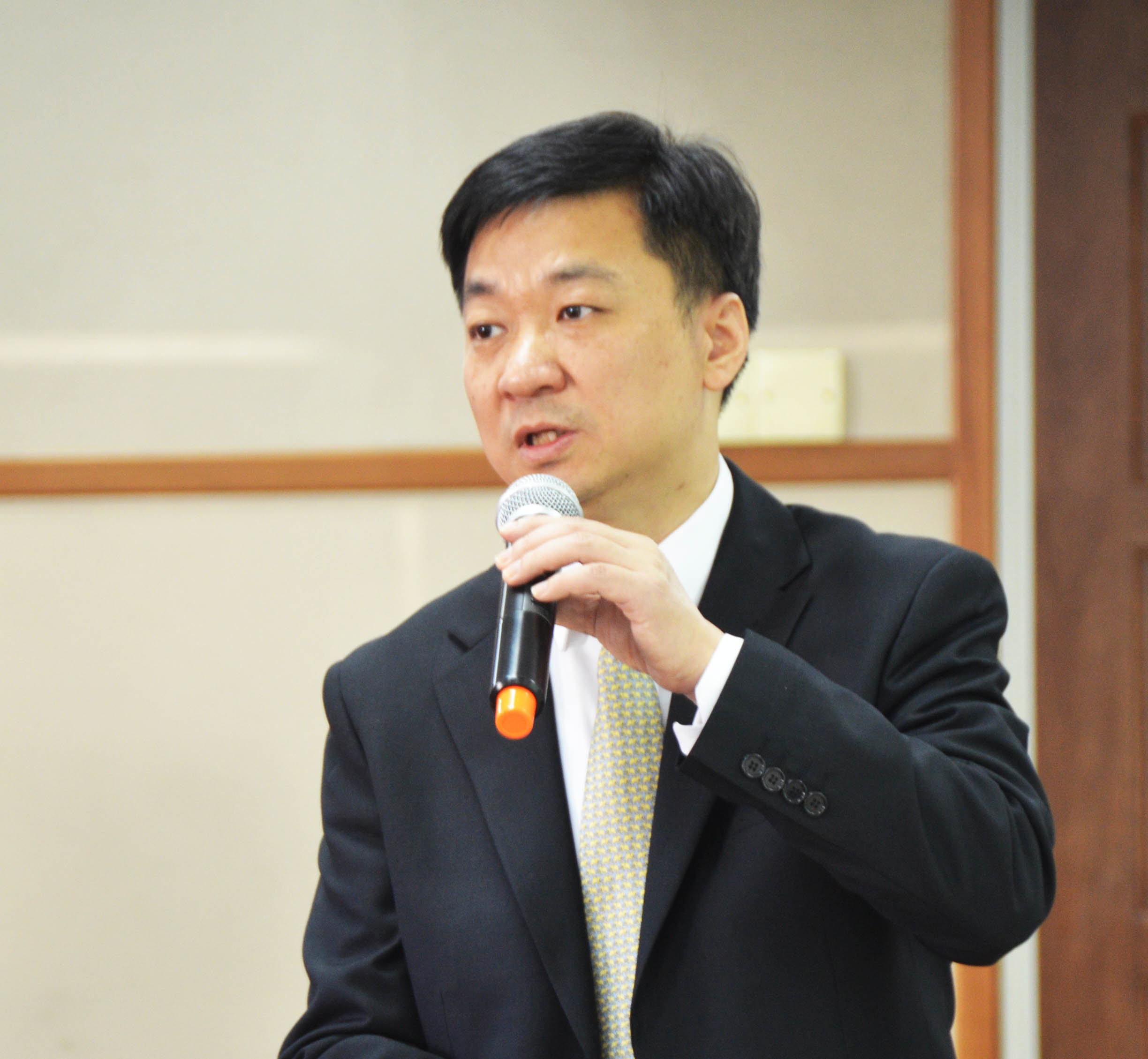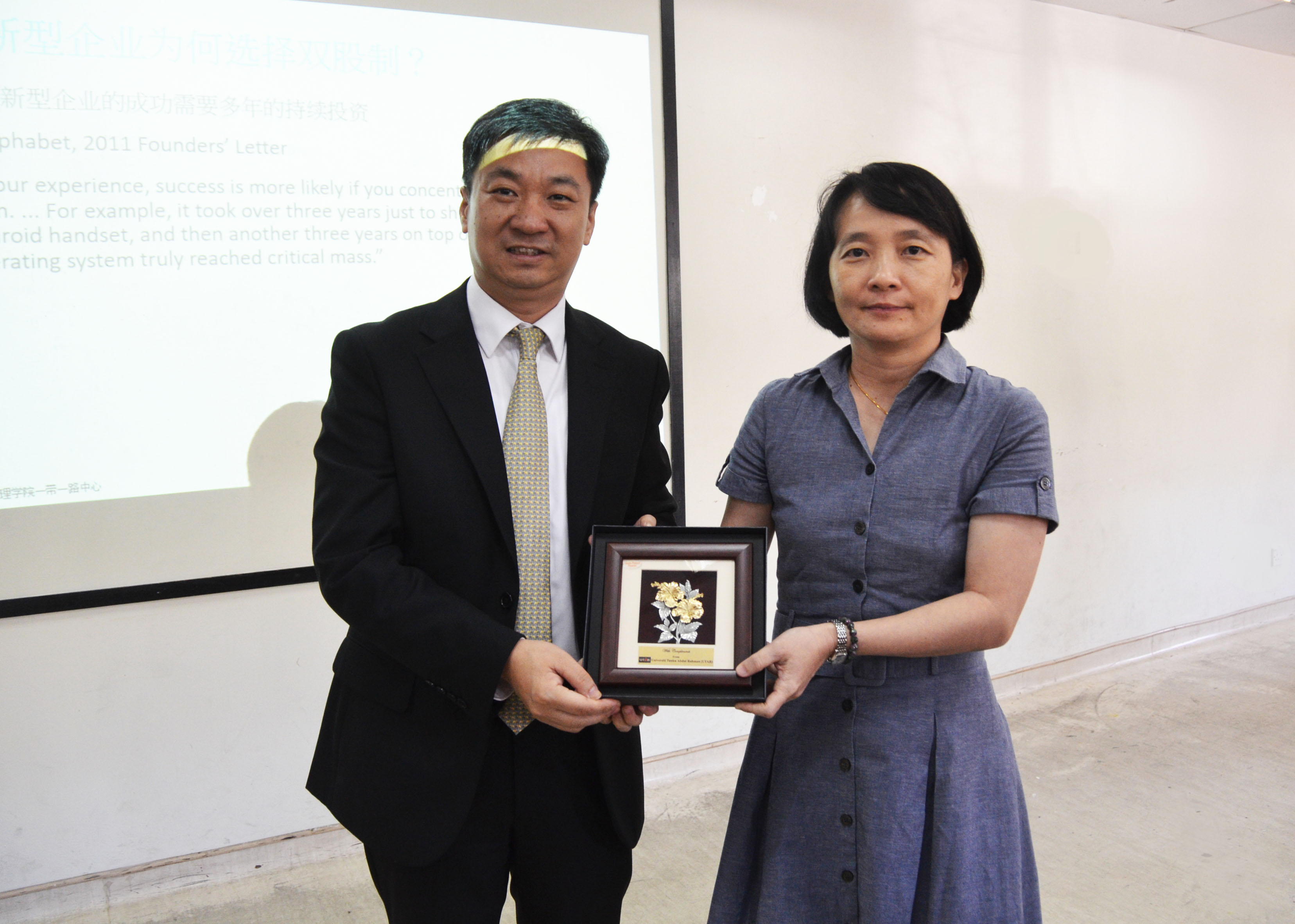


Dr Zhang (front row, second from right) with the participants
UTAR Institute of Management and Leadership Development (IMLD) and Belt and Road Strategic Research Centre (BRSRC) jointly organised a talk titled “Analysis of Financial Securities Markets in the Belt and Road Countries” at Sungai Long Campus on 7 January 2019.

Dr Zhang delivering his talk
Invited to deliver the talk was Dr Shaojun Zhang, an Associate Professor in the School of Accounting and Finance and Deputy Director of the Faculty of Business Belt and Road Centre at the Hong Kong Polytechnic University (PolyU). During the talk, he shared the background and the overall idea of the Belt and Road initiative (BRI), and explained how the initiative could boost the economic development and create new growth points.
He stated that the BRI focuses on six economic zones, which have been identified as the New Eurasia Land Bridge, China-Mongolia-Russia, China-Central Asia-West Asia, China-Indochina Peninsula, China-Pakistan, and Bangladesh-China-India-Myanmar. Since the BRI was officially proposed in 2013, he presented the basic economic situation of countries in 2014 based on geography areas and income levels in order to illustrate the underlying motivations behind this initiative. To provide a better understanding of the financial securities markets along the Belt and Road countries to the audience, he also presented some facts and observations from the analysis of key economic and financial market data in the Belt and Road countries.
He also explained the Morgan Stanley Capital International (MSCI) World Index and said, “MSCI identifies the markets around the world according to four categories, namely developed market, emerging market, frontier market and market which includes all the countries that are not classified in the first three markets. Only three Belt and Road countries are included in the developed category, which are Singapore, New Zealand and Israel.” According to him, the financial industry pays more attention to developed market as emerging market is unstable and risky.
Moreover, he explained the five key principles of BRI which included policy coordination, infrastructure connectivity, global trade and investment, finance integration and cultural dialogue. With regard to the transport infrastructure, he shared his main findings which demonstrated how the facilities could reduce the shipment times for BRI economies, particularly along economic corridors.
The talk ended with an interactive Q&A session, followed by a souvenir presentation from BRSRC Chairperson-cum-IMLD Director Prof Dr Cheng Ming Yu to Dr Zhang.

Prof Cheng (right) presenting a token of appreciation to Dr Zhang
© 2019 UNIVERSITI TUNKU ABDUL RAHMAN DU012(A).
Wholly owned by UTAR Education Foundation Co. No. 578227-M LEGAL STATEMENT TERM OF USAGE PRIVACY NOTICE